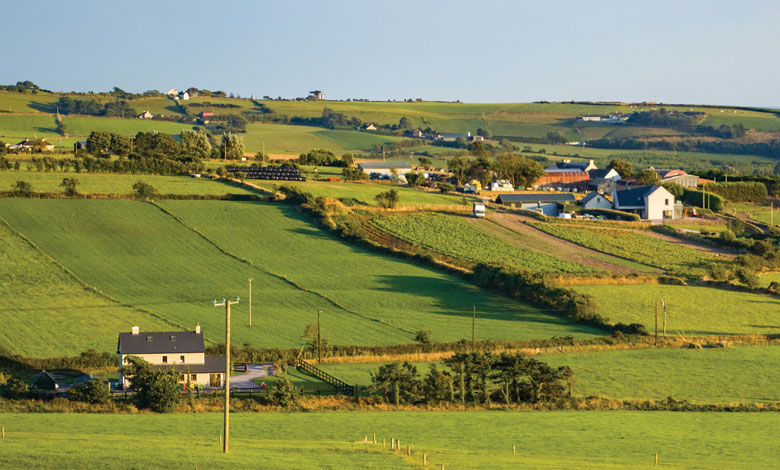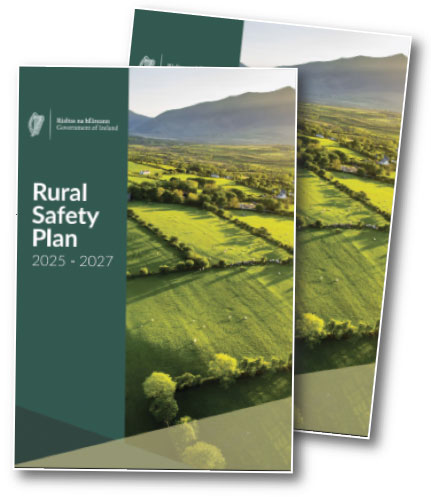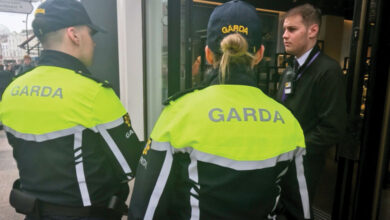Improving rural safety

The Rural Safety Plan 2025-2027, published in September 2025, contains 18 actions and 53-sub actions aimed at improving four key areas: community safety and engagement; property crime; roads policing; and animal wildlife and crime.
The establishment of local community safety partnerships (LCSPs) is identified as central to delivering on the plan’s actions. It asserts that each LCSP is required to develop a tailored community safety plan.
Community safety and engagement
Action one is to support a collaborative approach to rural safety. In line with this, the National Office for Community Safety is responsible for the establishment of 36 LCSPs by Q4 2025 and delivery of a strategy for improving community safety by Q2 2026.
Action two is to support crime detection and prevention in rural communities. Under this, the Garda must develop its Crime Prevention and Reduction Strategy 2026-2029 by Q4 2025. The plan also states that the Garda and Muintir na Tíre must support and encourage participation in community alert programmes but does not set targets for this sub-action.
Action three is to ensure nationwide accessibility to youth justice services through ongoing investment in youth diversion and youth justice initiatives. Action four is to promote youth engagement in rural communities through Foróige, farm safety events, and the Divisional Garda Youth Awards.
Action five is to promote senior engagement and safety in rural communities underpinned by continued implementation of the Garda Síochána Older People Plan and Property Marking Ireland’s Senior Alert Scheme.
Action six is to improve drug harm reduction in rural communities. This is underpinned by PsyCare expanding the Nightlife Intervention and Training for Empowerment into rural communities by Q1 2027. PsyCare must also partner with LCSPs, youth services, and local gardaí to improve drug harm reduction literacy by Q1 2027.
Property crime
Action seven is to prevent and deter the theft of farm and forestry machinery, and agricultural vehicles. To achieve this, the use of crime prevention products, technologies, and programmes must be encouraged. No targets are set for this sub-action.
Additionally, Property Marking Ireland is responsible for establishing and developing a property marking service for larger organisations by Q4 2027.
Action eight is to tackle home burglaries and trespassing on private property. To achieve this, the Irish Farmers’ Association (IFA) and the National Rural Safety Forum must inform the public of trespassing laws. No targets are set for this sub-action.
Action nine is to prevent fraud and cyber-crime targeting rural communities. In line with this, an aim is set for Muintir na Tíre’s community safety app CAIRDE to be launched in Q4 2025.
Action 10 is to reduce crime against rural businesses. In line with this, engagement with Garda community crime prevention programmes such as Business Watch must be encouraged but no targets are set to measure this.
Road safety
Action 11 is to enforce road traffic legislation to improve safety on rural roads. In line with this speed enforcement zones must be reviewed. Action 12 is to raise awareness of safe and responsible road use. To achieve this, the RSA is tasked with implementing educational measures aimed at protecting vulnerable road users.
Action 13 is to increase the availability of safe options for rural communities. Under this, the NTA must implement 52 Connecting Ireland routes across rural Ireland by Q4 2026. The plan also sets an aim for the NTA to “continuously review routes to identify areas of social exclusion”. Despite indicating that reviews must be continuous, the plan sets a delivery deadline of Q4 2024.
Animal and wildlife crime
Action 14 sets an aim to develop strategies to combat wildlife crime including illegal hunting, trespassing, and intimidation. In line with this, gardaí and the NPWS must liaise with local communities, stakeholders, community alert groups, and the IFA in “identified problem areas”. It does not indicate what the aim of this liaison is.
Action 15 is to maintain oversight of animal welfare and dog control policies. In line with this, the Department of Agriculture must engage with local authorities and “disburse relevant allocations to local authorities” to implement and enforce legislation.
Action 16 is to “foster collaboration among agricultural representative groups to address animal safety issues”. In line with this, the plan asserts that the IFA and National Rural Safety Forum must “strengthen engagement” with the Farmers and Animal Welfare Network by Q1 2026. It does not state how delivery of this sub-action will be measured.
Action 17 is to promote education and awareness campaigns on the dangers posed by uncontrolled dogs. The NPWS must produce awareness leaflets and structured media campaigns by Q3 2026.
Action 18 is to encourage livestock keepers to report stolen livestock to gardaí and their regional veterinary office as well as log updates on the AIM system. In line with this, relevant information for reporting must be included in the IFA’s newsletters and brochures.
While the plan is clear on targets for some sub actions it lacks detail on numerous others. For example, the plan states that uptake of crime prevention tools should be encouraged but does not outline how this should be measured.
However, it does provide comprehensive detail on the implementation of LCSPs which are identified as the most important component in delivering on the strategy’s goal of making rural communities safer.





